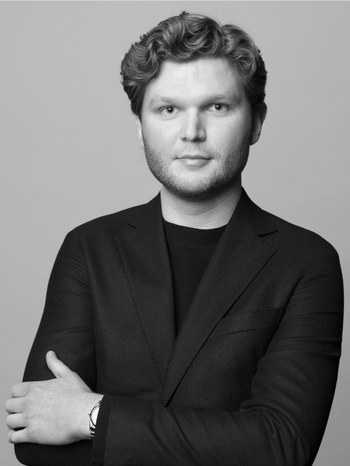Anna Petrus
a rare pewter table lamp, Firma Svenskt Tenn, Stockholm, 1927.
Relief decoration of female figures and grape clusters, stamped with the coat of arms of Stockholm and the year mark A8. Height including shade 41.5 cm, lamp base height 23 cm.
The present lamp is a slightly shorter version of the model.
Minor wear and patina, rewired and later shade.
Provenance
Reportedly a gift from the designer to the original owner for their 50th birthday.
Designer
Anna Petrus was a sculptor, industrial designer, and artist active in the early 20th century. She was born as Anna Petersson, the daughter of a professor of medicine and a countess, and adopted her surname while studying at the Royal Academy of Fine Arts. She inherited a modest fortune at the age of 11 when her mother passed away, which allowed her to pursue her education in London and travel to Italy and France.
Anna Petrus's major international breakthrough came with the Exposition Internationale des Arts Décoratifs et Industriels Modernes in Paris in 1925, where she showcased items in pewter and cast iron, in the Swedish Grace style. Pewter was considered an outdated material at the time, but its popularity grew as designers like Petrus recognised its advantages. In 1924, she began a collaboration with the then newly established Firma Svenskt Tenn. The lion became a recurring motif in Anna Petrus's work, both as sculptures and as stylised decorations.
Read more






















































